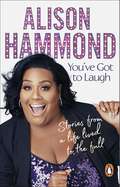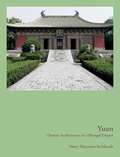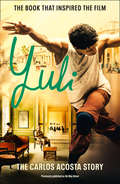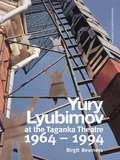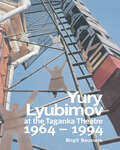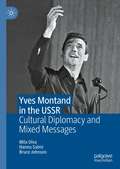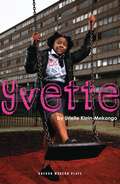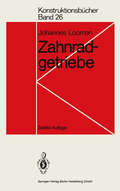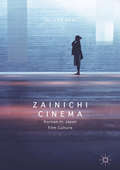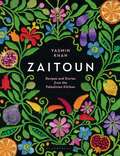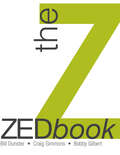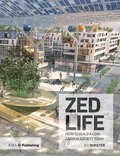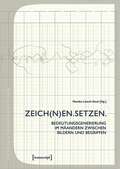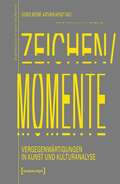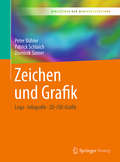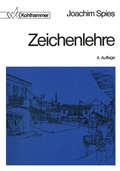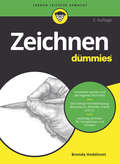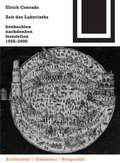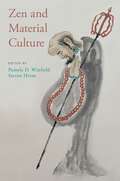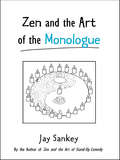- Table View
- List View
You’ve Got To Laugh: Stories from a Life Lived to the Full
by Alison HammondThe hilarious, heartwarming and joyful memoir from much-loved presenter Alison Hammond, host of ITV's This Morning.'This woman's laugh is like gold dust' Huffington Post '[A] national treasure' Metro 'I always say a day is wasted without laughter . . .' Alison Hammond loves to laugh. And the nation laughs with her. Her sunny personality and zest for life have brought joy to millions and made her one of the UK's best-loved television presenters. Known for her hilarious and unforgettable interviews with Hollywood A-listers, Alison is also responsible for countless classic moments of broadcasting gold - from getting stuck on a caravan door to delivering Christmas cash dressed as an elf. But who is Alison Hammond really, and how did she become the personality we know and love? Shaped by the influence of her incredible mum, Alison went from small roles on television shows as a youngster to that life-changing appearance on Big Brother, before landing her dream job on This Morning. And through it all, she found the joy in every day, the positives in any situation. You've Got to Laugh gives a never-before-seen insight into Alison's life: her loves, her losses - with a side order of gossip. As well as being a hugely entertaining and uplifting read, Alison's story will inspire you to grab life with both hands and make the most of every single moment. 'Interviewer extraordinaire, reigning queen of the huns, and an out-and-out national treasure' Bustle
Yuan: Chinese Architecture in a Mongol Empire
by Nancy SteinhardtA monumental illustrated survey of the architecture of thirteenth- and fourteenth-century ChinaThe Yuan dynasty endured for a century, leaving behind an architectural legacy without equal, from palaces, temples, and pagodas to pavilions, tombs, and stages. With a history enlivened by the likes of Khubilai Khan and Marco Polo, this spectacular empire spanned the breadth of China and far, far beyond, but its rulers were Mongols. Yuan presents the first comprehensive study in English of the architecture of China under Mongol rule.In this richly illustrated book, Nancy Shatzman Steinhardt looks at cities such as the legendary Shangdu—inspiration for Samuel Taylor Coleridge’s Xanadu—as well as the architecture the Mongols encountered on their routes of conquest. She examines the buildings and monuments of diverse faiths in China during the period, from Buddhist and Daoist to Confucian, Islamic, and Christian, as well as unusual structures such as observatories, archways, stone and metal buildings, and sarcophaguses. Steinhardt dispels long-standing views of the Mongols as destroyers of cities and architecture across Asia, showing how the khans and their families built more than they tore down. She demonstrates that the stipulations of the Chinese building system were powerful and resilient enough to guide the architecture that rose under Mongolian rule.Drawing on Steinhardt’s groundbreaking textual research in numerous languages as well as her pioneering fieldwork at sites across East Asia, Yuan will become the standard reference on this critical period of cultural and artistic exchange.
Yueyang Tower (large print)
by RnibThis is an image of a famous Chinese tower with three floors. There is a locator dot shown, which will be at the top left of the page when the image is the correct way up. The tower is shown from the front. The floor plan is square so each side of the tower looks the same apart from a door on the front view. The top of the tower is in the top centre of the page. There is a decorative spike coming from the top centre of the roof. The roof is rounded in the centre and curves down and then up to a point to the left and right. Along the ridge of the roof is decorative tiling. Down from this roof is the wall of the top floor made from red-brown wood. There are four windows each with two wooden shutters which are closed. Down the page is the roof of the middle floor. This runs horizontally flat in the middle and then curves down and up to a point to the left and right. The roof is supported by six wooden pillars set on an open balcony. The balcony is bordered by a low wooden wall with decorative carvings. The wooden wall of the middle floor building is set back from the balcony as shown to the left and right. It has windows and doors onto the balcony but these are not shown for clarity. The roof of the ground floor is the same as the middle floor only slightly wider. It is also supported by six wooden pillars which are set on an open veranda. The ground floor building has a door in the centre with a window to the left and right. The building stands on a low stone plinth. In the bottom centre of the page there are three steps up to the veranda. The tower was built in 222 AD and has had numerous renovations. It was rebuilt in 1867.
Yueyang Tower (UEB contracted)
by RnibThis is an image of a famous Chinese tower with three floors. There is a locator dot shown, which will be at the top left of the page when the image is the correct way up. The tower is shown from the front. The floor plan is square so each side of the tower looks the same apart from a door on the front view. The top of the tower is in the top centre of the page. There is a decorative spike coming from the top centre of the roof. The roof is rounded in the centre and curves down and then up to a point to the left and right. Along the ridge of the roof is decorative tiling. Down from this roof is the wall of the top floor made from red-brown wood. There are four windows each with two wooden shutters which are closed. Down the page is the roof of the middle floor. This runs horizontally flat in the middle and then curves down and up to a point to the left and right. The roof is supported by six wooden pillars set on an open balcony. The balcony is bordered by a low wooden wall with decorative carvings. The wooden wall of the middle floor building is set back from the balcony as shown to the left and right. It has windows and doors onto the balcony but these are not shown for clarity. The roof of the ground floor is the same as the middle floor only slightly wider. It is also supported by six wooden pillars which are set on an open veranda. The ground floor building has a door in the centre with a window to the left and right. The building stands on a low stone plinth. In the bottom centre of the page there are three steps up to the veranda. The tower was built in 222 AD and has had numerous renovations. It was rebuilt in 1867.
Yueyang Tower (UEB uncontracted)
by RnibThis is an image of a famous Chinese tower with three floors. There is a locator dot shown, which will be at the top left of the page when the image is the correct way up. The tower is shown from the front. The floor plan is square so each side of the tower looks the same apart from a door on the front view. The top of the tower is in the top centre of the page. There is a decorative spike coming from the top centre of the roof. The roof is rounded in the centre and curves down and then up to a point to the left and right. Along the ridge of the roof is decorative tiling. Down from this roof is the wall of the top floor made from red-brown wood. There are four windows each with two wooden shutters which are closed. Down the page is the roof of the middle floor. This runs horizontally flat in the middle and then curves down and up to a point to the left and right. The roof is supported by six wooden pillars set on an open balcony. The balcony is bordered by a low wooden wall with decorative carvings. The wooden wall of the middle floor building is set back from the balcony as shown to the left and right. It has windows and doors onto the balcony but these are not shown for clarity. The roof of the ground floor is the same as the middle floor only slightly wider. It is also supported by six wooden pillars which are set on an open veranda. The ground floor building has a door in the centre with a window to the left and right. The building stands on a low stone plinth. In the bottom centre of the page there are three steps up to the veranda. The tower was built in 222 AD and has had numerous renovations. It was rebuilt in 1867.
Yuli: A Cuban Dancerâs Story
by Carlos AcostaNOW AN AWARD-WINNING FEATURE FILM STARRING CARLOS ACOSTA
Yuri Lyubimov: Thirty Years at the Taganka Theatre
by B. BeumersA study of Yury Lyubimov's tempestuous career and his style of theatre during his thirty years at the Taganka Theatre. This work traces the development of his ideas, from his arrival at the theatre in 1964 through to his explusion in 1984, and his period of exile in the West until his return in 1989 to a much-changed Russia. Tracing Lyubimov's work play by play, the book uncovers an individual doomed to be at odds with the prevailing political and social climate of his literary contemporaries.
Yuri Lyubimov: Thirty Years at the Taganka Theatre
by B. BeumersA study of Yury Lyubimov's tempestuous career and his style of theatre during his thirty years at the Taganka Theatre. This work traces the development of his ideas, from his arrival at the theatre in 1964 through to his explusion in 1984, and his period of exile in the West until his return in 1989 to a much-changed Russia. Tracing Lyubimov's work play by play, the book uncovers an individual doomed to be at odds with the prevailing political and social climate of his literary contemporaries.
Yves Montand in the USSR: Cultural Diplomacy and Mixed Messages
by Mila Oiva Hannu Salmi Bruce JohnsonThis volume is the first book-length account of Yves Montand’s controversial tour of the Soviet Union at the turn of the years 1956/57. It traces the mixed messages of this internationally visible act of cultural diplomacy in the middle of the turbulent Cold War. It also provides an account of the celebrated French singer-actor’s controversial career, his dedication to music and to peace activism, as well as his widespread fandom in the USSR. The book describes the political background for the events of the year 1956, including the changing Soviet atmosphere after Stalin’s death, portrays the rising transnational stardom of Montand in the 1940s and 1950s, and explores the controversies aroused by his plan to visit Moscow after the Hungarian Uprising. The book pays particular attention to Montand’s reception in the USSR and his concert performances, drawing on unique archival material and oral history interviews, and analyses the documentary Yves Montand Sings (1957) released immediately after his visit.
Yvette (Oberon Modern Plays)
by Urielle Klein-Mekongo“I see the way that butters-fat-lipped-troll-Patrice looks at him, now she’s the kinda lighty that finks she’s too nice.” Evie is thirteen and lives in Neasden with her Mum. She wants to tell us about something…her crush on Lewis, trying to be a woman, friends, virginity, garage remixes, Hello Kitty underwear…an ‘Uncle’ lurking in the corner of her story. She wants to make us laugh, she’s pretty good at it. She wants to tell us something, but she daren’t let it out. Based on a true story, Yvette is a one-woman show with original music about a stolen childhood and growing up with a secret.
Zahnradgetriebe: Grundlagen, Konstruktionen, Anwendungen in Fahrzeugen (Konstruktionsbücher #26)
by Johannes LoomanZainichi Cinema: Korean-in-Japan Film Culture
by Oliver DewThis book examines how filmmakers, curators, and critics created a category of transnational, Korean-in-Japan (Zainichi) Cinema, focussing on the period from the 1960s onwards. An enormously diverse swathe of films have been claimed for this cinema of the Korean diaspora, ranging across major studio yakuza films and melodramas, news reels created by ethnic associations, first-person video essays, and unlikely hits that crossed over from the indie distribution circuit to have a wide impact across the media landscape. Today, Zainichi-themed works have never had a higher profile, with new works by Matsue Tetsuaki, Sai Yoichi, and Yang Yonghi frequently shown at international festivals. Zainichi Cinema argues that central to this transnational cinema is the tension between films with an authorized claim to “represent”, and ambiguous and borderline works that require an active spectator to claim them as images of the Korean diaspora.
Zaitoun: Recipes and Stories from the Palestinian Kitchen
by Yasmin KhanA dazzling cookbook with vibrant recipes, captivating stories and stunning photography from Palestine 'A moving, hugely knowledgeable and utterly delicious book' Anthony Bourdain'A big bowl-full of delicious Palestinian recipes, plus lots of insightful and moving stories... Great stuff' Yotam Ottolenghi'A zingingly evocative collection of personal stories... Calling it a cookbook does it a disservice. Zaitoun deserves to be read as much as cooked from' Observer Food Monthly Bursting with the freshness and brightness that is characteristic of all Levantine cuisine, Palestinian food is fragrant, healthy and delicious. From a colourful array of bountiful mezze dishes to rich slow-cooked stews flavoured with aromatic spice blends, it's a cuisine that represents the very best of modern Middle Eastern cookery. In this beautiful Palestinian cookbook, food writer Yasmin Khan shares recipes and stories from her travels through the region. On her journey she harvests black olives from the groves of Burquin in the West Bank, hand-rolls maftool – the plump Palestinian couscous – in home kitchens in Jenin and even finds time to enjoy a pint with workers at the Taybeh brewery, which is producing the first Palestinian craft beer. As she feasts and cooks with Palestinians of all ages and backgrounds, she learns about the realities of their everyday lives. Zaitoun includes herb-filled salads, quick pickles, fragrant soups, tender roasted meats and rich desserts, and has a special focus on vegetarian versions of Palestinian classics. It has recipes for olive, fig and honey tapenade, roast chicken stuffed with pine nuts and raisins, and pomegranate passion cake, among many others. And surrounding the recipes, there is a chorus of stories from those who love, live and cook with Palestine in their hearts.
The ZEDbook: Solutions for a Shrinking World
by Bill DunsterThough few now doubt the severity of the environmental problems faced by humanity there is still resistance from businesses, developers, architects, planners and government when it comes to making the step changes necessary to make our lifestyles sustainable. Based on the experience gained from their involvement in the pioneering Beddington Zero Emission Development (or BedZED) in London, and subsequent innovative schemes, The ZEDbook authors present a bold, coherent and refreshing vision of a low carbon future. In three comprehensive sections, The ZEDbook leads the reader from basic ZEDliving principles through building physics and architectural design details to a carefully selected array of informative case studies. The ZEDbook is a must-have purchase for anyone wanting to make communities and the built environment more sustainable.
The ZEDbook: Solutions for a Shrinking World
by Bill DunsterThough few now doubt the severity of the environmental problems faced by humanity there is still resistance from businesses, developers, architects, planners and government when it comes to making the step changes necessary to make our lifestyles sustainable. Based on the experience gained from their involvement in the pioneering Beddington Zero Emission Development (or BedZED) in London, and subsequent innovative schemes, The ZEDbook authors present a bold, coherent and refreshing vision of a low carbon future. In three comprehensive sections, The ZEDbook leads the reader from basic ZEDliving principles through building physics and architectural design details to a carefully selected array of informative case studies. The ZEDbook is a must-have purchase for anyone wanting to make communities and the built environment more sustainable.
ZEDlife
by Bill DunsterThe argument for low-cost, zero-energy, zero-waste architecture has never been timelier, while the mainstream has largely abandoned or neglected this agenda: in the UK the recent mandatory zero-carbon performance targets for new homes have been postponed or forgotten at a time when thousands of new homes will be built, and there is already a shortage of electric generating capacity. This book offers a forceful challenge to the current addiction to overconsumption of natural capital and energy, and provides workable, sustainable solutions for zero-carbon, zero-waste design.
ZEDlife
by Bill DunsterThe argument for low-cost, zero-energy, zero-waste architecture has never been timelier, while the mainstream has largely abandoned or neglected this agenda: in the UK the recent mandatory zero-carbon performance targets for new homes have been postponed or forgotten at a time when thousands of new homes will be built, and there is already a shortage of electric generating capacity. This book offers a forceful challenge to the current addiction to overconsumption of natural capital and energy, and provides workable, sustainable solutions for zero-carbon, zero-waste design.
ZEICH: Bedeutungsgenerierung im Mäandern zwischen Bildern und Begriffen (Linzer Beiträge zur Kunstwissenschaft und Philosophie #11)
by Monika Leisch-KieslDieses Buch fragt weniger nach dem Was des Zeichens, als vielmehr nach dem Wann / Wo / Wie der Zeichensetzung. Was lasst eine Markierung oder Spur als Zeichen erkennen? Was sind seine asthetischen, medialen, politischen Vorbedingungen? Welche (unterschiedlichen) Rollen spielt das Setzen von Zeichen im Alltag der Kultur und in den Kunsten? Welche theoretischen Zugänge der Antike, der Moderne sowie aktueller Debatten lohnt es aufzugreifen und neu zu sondieren? In vier Panels, einem Praeludium, einem Intermezzo und einer Coda treten künstlerische Positionen wie Vaslav Nijinsky, Paul Valéry, Birgit Jürgenssen, Thomas Fatzinek und VertreterInnen der Kunst-, Tanz-, Kultur- und Medienwissenschaften sowie der Semiotik und Philosophie wie Claudia Jeschke, Karin Krauthausen, Sebastian Egenhofer, Aloisia Moser, Barbara Schrödl, Ludwig Jäger, Sarah Sander in ein neugieriges und munteres Gespräch mit manch überraschenden Entdeckungen. Mit Zeichnungen von Maria Bussmann und einem Brief von Hélène Cixous.
Zeichen/Momente. Vergegenwärtigungen in Kunst und Kulturanalyse (Studien zur visuellen Kultur #24)
by Sigrid Adorf Kathrin HeinzWie müssen wir zurückschauen, um Was sehen zu können und darüber unseren Blick für das Gegenwärtige und Kommende zu schärfen? Die Beiträge des Bandes, der zu Ehren von Sigrid Schade erscheint, beziehen sich auf vielschichtige Diskursgeschichten an den Schnittstellen von Kunst-, Kultur- und Medienwissenschaften. Sie beleuchten künstlerische, kulturelle und soziale Praktiken und Ordnungen als Aushandlungsort komplexer Bedeutungs- und Beziehungsgefüge. Mit Beiträgen von Mieke Bal, Kerstin Brandes, Vera Frenkel, Sabine Gebhardt Fink, Insa Härtel, Karin Harrasser, Kornelia Imesch, Carmen Mörsch, Irene Nierhaus, Griselda Pollock, Dorothee Richter, Steffen A. Schmidt, Philip Ursprung und Silke Wenk.
Zeichen und Grafik: Logo - Infografik - 2D-/3D-Grafik (Bibliothek der Mediengestaltung)
by Peter Bühler Patrick Schlaich Dominik SinnerDieser Band der „Bibliothek der Mediengestaltung“ behandelt die Gestaltung von Zeichen wie Piktogramme, Icons und Logos sowie von Infografiken. Außerdem thematisiert der Band die Erstellung von 2D- und 3D-Grafiken. Für diese Bibliothek wurden die Themen des Kompendiums der Mediengestaltung neu strukturiert, vollständig überarbeitet und in ein handliches Format gebracht. Leitlinien waren hierbei die Anpassung an die Entwicklungen in der Werbe- und Medienbranche sowie die Berücksichtigung der aktuellen Rahmenpläne und Studienordnungen sowie Prüfungsanforderungen der Ausbildungs- und Studiengänge.Die Bände der „Bibliothek der Mediengestaltung“ enthalten zahlreiche praxisorientierte Aufgaben mit Musterlösungen und eignen sich als Lehr- und Arbeitsbücher an Schulen sowie Hochschulen und zum Selbststudium.
Zeichenlehre
by Joachim SpiesDie Techniken und Darstellungsarten des Freihandzeichnens und ihre Anwendung werden leicht verständlich und mit vielen Beispielen versehen angeboten: Strich- und Lockerungsübungen, Punkt-Linie-Fläche / Struktur-Raster-Ornament / Körper-Stilleben, Raum-Innenraum / Landschaften / Figur-Portrait-Tiere / Kompositionen und Ordnungssystemschriften. Das Buch ist unentbehrlich zur Erlernung anschaulichen visuellen Denkens als Grundlage der Architektenausbildung und bei jeglicher künstlerischen Betätigung
Zeichnen für Dummies (Für Dummies)
by Brenda HoddinottImmer wieder ist es faszinierend, wie schnell manche Menschen die schönsten Zeichnungen auf Papier zaubern können. Ein paar Striche, Linien und auf wundersame Art und Weise entstehen Gegenstände, Landschaften und Gesichter. Sehr beeindruckend. »Zeichnen für Dummies« beginnt mit den Grundlagen und arbeitet sich dann zu immer komplexeren Darstellungen vor. Den Lesern wird systematisch erklärt, wie sie den Stift führen müssen, damit sie ihre Motive mit einem Schuss Persönlichkeit aufs Papier bringen können.
Zeit des Labyrinths: beobachten, nachdenken, feststellen 1956-2006 (Bauwelt Fundamente #136)
by Ulrich ConradsDer wahre Architekturkritiker, hat Ulrich Conrads einmal gesagt, kenne nur einen Maßstab, den Maßstab 1:1. Der Kritiker lasse sich zwar im Vorhinein von glänzend gesehenen Fotos informieren, jedoch nicht täuschen, denn er arbeite an Ort und Stelle. Er berichte nur über Bauten, die er selbst aus wechselnden Distanzen gesehen, mehrmals umschritten und all ihre Räume und Raumfolgen von den Kellern bis unters Dach in Ruhe begangen hat. Eine notwendige Ergänzung: Der wahre Architekturkritiker beschränkt sich nicht auf sein Ressort. Ulrich Conrads hat seine Texte stets als Einmischung in die öffentliche Debatte über Architektur und Stadt verstanden. Als kritisches Reden über das, was vielfach als nicht zur Sache gehörend beschwiegen wird. Der Band versammelt Artikel, Aufsätze, Vorträge und Briefe Ulrich Conrads aus den Jahren 1956-2006 zu zeitgenössischen Gebäuden, wie der Kirche Le Corbusiers in Ronchamp und bedeutenden Architekten der Zeit, wie beispielsweise Hans Scharoun.
Zen and Material Culture
by Pamela D. Winfield Steven HeineThe stereotype of Zen Buddhism as a minimalistic or even immaterial meditative tradition persists in the Euro-American cultural imagination. This volume calls attention to the vast range of "stuff" in Zen by highlighting the material abundance and iconic range of the Soto, Rinzai, and Obaku sects in Japan. Chapters on beads, bowls, buildings, staffs, statues, rags, robes, and even retail commodities in America all shed new light on overlooked items of lay and monastic practice in both historical and contemporary perspectives. Nine authors from the cognate fields of art history, religious studies, and the history of material culture analyze these "Zen matters" in all four senses of the phrase: the interdisciplinary study of Zen's matters (objects and images) ultimately speaks to larger Zen matters (ideas, ideals) that matter (in the predicate sense) to both male and female practitioners, often because such matters (economic considerations) help to ensure the cultural and institutional survival of the tradition. Zen and Material Culture expands the study of Japanese Zen Buddhism to include material inquiry as an important complement to mainly textual, institutional, or ritual studies. It also broadens the traditional purview of art history by incorporating the visual culture of everyday Zen objects and images into the canon of recognized masterpieces by elite artists. Finally, the volume extends Japanese material and visual cultural studies into new research territory by taking up Zen's rich trove of materia liturgica and supplementing the largely secular approach to studying Japanese popular culture. This groundbreaking volume will be a resource for anyone whose interests lie at the intersection of Zen art, architecture, history, ritual, tea ceremony, women's studies, and the fine line between Buddhist materiality and materialism.
Zen and the Art of the Monologue
by Jay SankeyJay Sankey--stand-up comic, magician, and cartoonist--is back with another book for performers. Building on the success of his Zen and the Art of Stand-up Comedy, Jay is moving further into the uncharted wilds of solo performance.
